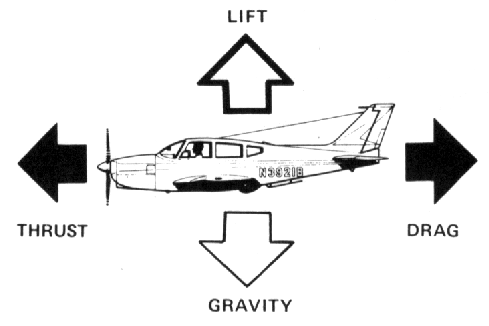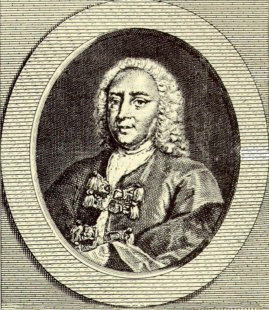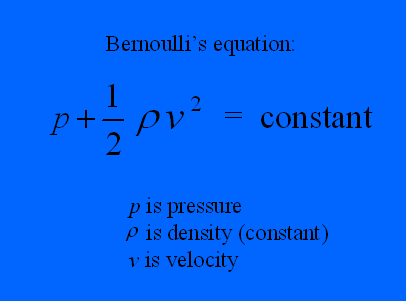The Wright Brothers: A Centennial Tribute
by Dr. Bob Gardner
Department of Mathematics
Department of Physics, Astronomy and Geology
Institute of Mathematical and Physical Sciences
East Tennessee State University

The Forces on an Airplane
There are four forces acting on an airplane: gravity, thrust, drag, and lift. Of course the Wright Brothers understood gravity (its result being the weight of the aircraft), drag (caused by air resistance on the aircraft), and thrust (due to the engine and propeller). However, the brothers had no theoretical understanding of lift, though they had an experimental understanding from the results with the wind tunnels and gliders. But how does lift work?

Daniel Bernoulli
According to a result of Daniel Bernoulli presented in 1738, fast moving fluids (such as air), exhibit less force than slow moving fluids.
Quantitatively, this can be stated as
 where p represents pressure, rho density of the fluid (assumed to be constant) and v velocity.
Therefore, a large velocity v results in a small pressure p, and conversely a small velocity v results in a large pressure p.
where p represents pressure, rho density of the fluid (assumed to be constant) and v velocity.
Therefore, a large velocity v results in a small pressure p, and conversely a small velocity v results in a large pressure p.
 Therefore, if we produce a surface such that air takes longer to travel over the top than the bottom, the surface will produce a net upward force. Such a surface is called an airfoil and the net force is called lift. The Wright Brothers were unaware of this theoretical result, but were experimentally familiar with these ideas. So who was originally responsible for theoretically explaining the lift of an airfoil and hence establishing the very basis of aeronautical engineering? It was, we can observe with some pride, a son of upper east Tennessee! Let's elaborate...
Therefore, if we produce a surface such that air takes longer to travel over the top than the bottom, the surface will produce a net upward force. Such a surface is called an airfoil and the net force is called lift. The Wright Brothers were unaware of this theoretical result, but were experimentally familiar with these ideas. So who was originally responsible for theoretically explaining the lift of an airfoil and hence establishing the very basis of aeronautical engineering? It was, we can observe with some pride, a son of upper east Tennessee! Let's elaborate...
Go to Edward Huffaker section.




